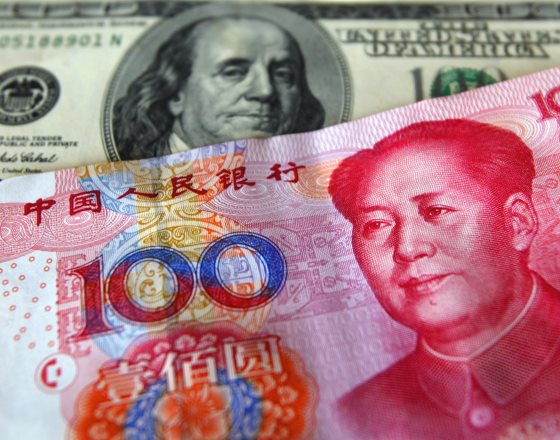
There was a frenzy of speculation about Chinese currency devaluation earlier this year aftera series of surprise moves that weakened the yuan (also called the renminbi) against the dollar.
With hindsight, most analysts interpreted discussion of Chinese devaluation as a major overreaction. For all the discussion, the yuan has fallen by only about 3% in value against the dollar in 2015.
But Bank of America Merrill Lynch analysts don't think it was so overblown. In fact, as part of their outlook for the year ahead, they are suggesting there is significantly more to come, predicting a decline of up to 10% in the yuan-dollar exchange rate.
Here's a snippet from the note:
China, because of its relatively inflexible FX regime, imported US monetary policy perhaps more absolutely than others. As a result, its debt binge went further than most other countries. McKinsey estimated that Chinese debt has quadrupled since 2007 and its debt to GDP ratio has risen above that of the US. The question is, given the semi USD/RMB peg and China's increasing open capital account (which come at the expense of China's monetary independence), whether China can live with higher US interest rates and a higher US dollar.
We are skeptical. This why we think the USD/RMB peg, a marriage of convenience that has been the anchor for the global growth model for the better part of the last 15 years, is headed for a divorce, and we think the RMB devaluation on 11 August was a first small step in this direction.
We see the RMB declining as much as 10% against the greenback in 2016, and we think this will fundamentally shape the investment outlook for the rates and currencies market.
A weaker currency generally would boost China's export potential and might help to prop up its flagging growth figures. A 10% devaluation or anything like it would be the biggest drop in its value since 1994, the year Beijing decided to bring in the renminbi-dollar peg that held the value of the currency extremely steady for over a decade.
The yuan has actually strengthened in general over the past decade. It is still up by about 6.5% against the greenback since the middle of 2010 and up by 22.8% in the past 10 years, since the currency was unpegged from the dollar in 2005.
But before that period of pegging, you can see how massively the currency was devalued over a 15-year period, rising from less than two to the dollar in the early 1980s to over eight to the dollar by 1994.
That fuelled a huge amount of whining from American politicians, who argued that China was intentionally cheapening its currency to damage US manufacturing power.
That case still has a strong resonance with many American voters who are unhappy with their industrial sectors being hollowed out — one political candidate who has already made hay from that disquiet is Republican front-runner Donald Trump. In August he said Chinese attempts at devaluation would be "devastating" for the United States.
If BAML's analysts are right and a major further devaluation is coming, Trump could be a major beneficiary.
original source: http://www.businessinsider.com/baml-on-2016-chinese-yuan-devaluation-2015-11?r=UK&IR=T
